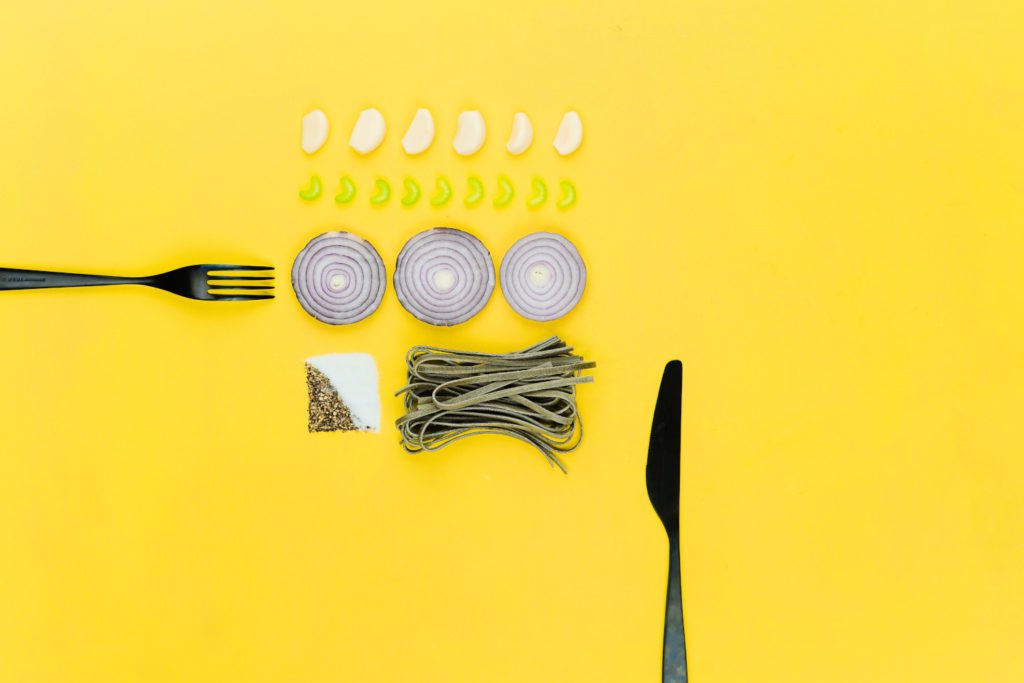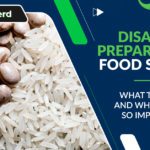When you decided to start prepping and building a stockpile of food and supplies, it may have been pretty overwhelming at first. But as you did your research on preparedness blogs and YouTube channels, you started to get a good feel for which items to stock up on. Maybe you started to “nerd out” on photos or videos of other preppers’ inventories, or researched the best items to buy that would have a decent shelf life.

As you began to build up your “prepper’s pantry”, you probably (hopefully) started to feel peace of mind and even relief that you and your family would have what you need in case of a disaster or SHTF situation. As preppers, we know that the investment for building a supply is not insignificant, but it’s worth it for the peace of mind knowing that we have insurance we can eat.
However, one thing many preppers begin to realize as they build their prep stockpile, is that much of your food supply has what is known as ‘best-by’ dates. As those dates approach, you may start to envision the pain of disposing of large amounts of your food preps that never got eaten. What’s a prepper to do about these dates?
The good news for us is that, with the right perspective, best-by dates don’t need to mean that you’re wasting tons of food. Many foods in your supply will be just fine for longer (sometimes much longer) than the date on the package; it’s just a matter of knowing what to look for and what’s behind the dates on your food.
Why Do Foods Have Best-By Dates?
In the US market, there are no federal regulations on food labeling outside of baby formula.
However, food manufacturers use a few different terms to guide consumers’ perceptions and behaviors. Here are a few different terms you might see on food products in your home:
- Use By / Best By – This usually indicates the best quality or flavor of a product. For example, a bag of chips may lose some of its crunch after this date, but would still be safe to consume.
- Sell By – This date indicates to retailers when to take a product off the shelves. The dates can range from days to weeks and can preserve food safety for consumers.
Most of the ‘best-by’ dates you see on foods are about food manufacturers ensuring the quality of their product when it’s consumed. It’s terrible marketing for a company to have consumers eating their product after it’s passed peak freshness, so these dates help push customers to eat products when the manufacturer can more accurately predict the taste and texture of their product.
So What’s The Problem?
So best-by dates seem like a good thing, right? After all, who wants to eat chips that have lost their crisp?
The problem is that another effect of best-by dates is that they can encourage the purchase of a newer package of food, even if the older package is still perfectly fine to consume. This obviously leads to food waste.
According to the United States Department of Agriculture1, Americans waste close to a pound of food per person per day! In fact, about 10% of these items could be categorized as non-perishables, which means that millions of pounds of food are being thrown away that is perfectly safe for consumers.
Wasted food is a huge problem for landfills, but it doesn’t stop there. For every pound of food that is wasted, we must also consider the wasted energy and money spent on the labor, manufacturing, and shipping of food that ended up being thrown in the trash. Wasted food is bad for the environment and, obviously, bad for our wallets.
What Can We Do?
There are legislators working to regulate dates that are put on food packaging, to give consumers a clear picture of what food is and is not safe to consume. In the meantime, there are things we can do to protect our investment in our supply and to stop contributing to food waste.
Learn what foods you can ignore best-by dates on.
According to Consumer Reports2, many foods can be consumed well past the date stamped on the container. “As a general rule of thumb, most canned foods (for example, canned tuna, soups, and vegetables) can be stored for two to five years, and high-acid foods (canned juices, tomatoes, pickles) can be stored for a year up to 18 months, according to the USDA.” They go on to issue a word of advice to “watch out for dents and bulges in cans.” Dried pasta can be eaten up to three years after its best-by date, and items like sugar and rice can last almost indefinitely.
Prep what you eat, and eat what you prep
It doesn’t do you any good to buy food just because of the calories. When stocking up, you must focus on foods you already know you enjoy. This will help to ensure that your preps are simply just an extra backlog of food you know you like, rather than a hoard of food that could completely go to waste because you don’t regularly eat it.
Maximize freshness by storing your food in the best conditions
This could be a whole article in and of itself, but generally, the temperature, humidity, and light are all factors that impact a food’s shelf life. Do your research and store your food in a cool, dry, dark environment and it will last as long as possible.
Be ORGANIZED and rotate through your preps
Speaking of a backlog, your preps should be thought of as simply buying what you would normally buy, but just doing so early. However, the greater your stockpile, the more storage space will be required. This may mean a dedicated prepper pantry room, or you may have food stored in bins throughout your home (like me).
In either case, it’s absolutely essential that you have an organized system so that you can effectively rotate through your preps.
The Ultimate Prep System makes it easy to be organized and rotate through your food, wherever it may be stored throughout your home. LEARN MORE
Use best-by dates as a point of reference rather than the be-all-end-all
Best-by dates are simply a point of reference, meaning that when you have many cans or cases of canned veggies, for example, you know which ones should be eaten first. Not that they necessarily need to be eaten by the best-by date, but the dates give you something that can help you prioritize which food items should be first consumed.
Learn to rely on your senses
While the dates on your food containers can be used as a point of reference, so that you can effectively rotate through your preps, it’s essential to learn to use your senses to determine whether an item is safe to eat.
The UK launched its “Look, Smell, Taste, Don’t Waste” campaign 3 to combat food waste. The campaign encourages consumers to use their senses to assess food’s readiness to eat rather than simply relying on the packaging. While the campaign is working to garner commitments from major food companies regarding their labeling, it’s also teaching consumers to look for signs of spoilage before tossing food that is perfectly safe to eat.
The campaign encourages people to look for signs such as mold, discoloration, or weevils, and outside of these occurrences, to consider the food may be absolutely safe to consume. Most people don’t need a lesson on smelling or tasting spoiled food, but the public could stand to be educated on the fact that look, smell, and taste are reliable indicators of whether a food should be eaten.
Conclusion
Learning to have a proper perspective on best-by dates, as well as following the recommendations above will help you minimize stress and food waste as you continue to prepare for whatever may be ahead of us.
Remember the importance of organization. Check out the Ultimate Prep System and get your preps organized today!
Sources:
1: https://journals.plos.org/plosone/article?id=10.1371/journal.pone.0195405#sec010
2: https://www.consumerreports.org/food-safety/how-to-tell-whether-expired-food-is-safe-to-eat/




There’s good and bad in having these in the Ultimate Prep System. The con is having to either create more than one listing by BB dates where the BB date controls the entire listing or using the oldest BB date for the entire quantity. I.e., I have 3 cans of tomato paste with a BB date of 08-30-21 and 12 cans with a BB date of 08-30-23. Do I make two entries or use the soon-to-expire date and show 15 cans dated 08-30-21? I opt for the later if I use the BB date and make a note in the notes column. When I have used the 3 cans, I will need to change the BB date to the 2023 date. That way I keep only one entry. It does give a false reading on the days on hand by BB date chart.
Is there any way to put an alert on an item that will notify you that there are items expiring that must be tossed? If so, then what I would do is to make one column a Date to Toss (as opposed to just BB date which I usually ignore) and on that date when I receive my alert, I would go in and either use it very soon, feed it to the animals, or toss it.
Hi Rebecca! Thanks for your comment.
The nice thing about the system is that it’s flexible to how you want to use it. So while some people use best by dates and have a row for each group of like items with a similar or same best by date, other people forego tracking BBD entirely. For me, using one row with the earliest best by date would cause issues later, but that’s because I have items stored in multiple locations.
To answer your question, yes! Alerts are possible and we can add a column to your sheet (Date to Toss) to trigger the alerts. If you’d like this set up, please just reply to the email and let me know exactly what you want (when you want the alert, etc).
Hope this helps!
I’m definitely sending you an email. I want a toss column with an alert. ❤
I love having the BB date because it it helps me rotate properly. The earliest BB date are in my kitchen. In a perfect world, when consuming my preps, I would change the BB date as I consume the earlier dated products therefore, only needing to have 1 line per item.
I’m with you Renae! Thanks for being here :)
I have the same issue as Rebecca. Also I forget to delete what I eat. Is there a way to add a delete button to the add inventory? If I scanned to add, can’t I also scan to delete? I’m not even worried about Best Buy date and don’t really want to go back into the inventory list and change the quantity. If it can even be done
Hi Jessica, thanks for the comment!
To answer your question, the simplest way is to use the ‘search’ feature within the Food Inventory sheet, scan the barcode, and it will go right to that record so you can update the quantity or delete it altogether. You can also search by any text in the food description, etc.
I hope this helps! Let me know if you have any other questions!
I judge by the condition of the can and the food, not the date that is required to be stamped on it.
Makes sense to use our senses :)
Great advice. Every so often I go through the pantry and pull out older food items and creatively use them up.
Yes, absolutely! Need to minimize food waste.
Great article. If Steve MRE isn’t afraid of best by dates, then I’m not either
Thanks for the comment!
I like the best by dates.
Thanks for being here!
That’s really good advice! I’ve been burned by Best By dates being well off in the future but poor storage led to the product going bad much sooner than expected.
Great point!
I’ve learned over time to really trust my senses, has taken a while but pretty confident going with my gut these days.
I’m with you! I consider these best by dates more like a guideline or reference point for food rotation.
Keep in mind that fat tends to go rancid, so food with more fat tends to not last as long.
Great point!
I don’t’ hold to the BB dates too strictly a good sniff test will help me at times, but there are some things not worth taking chances on. Keep up the great work.
Thanks Joshua! I completely agree
I definitely think that they should have more than one “best before” date on foods! One should be for the quality and the other one should be for when it is no longer safe to eat!
That would be nice, wouldn’t it :)
I take by the expiration date it is important to check well before eating the food
I use them on certain things like meat, dairy, etc. But not really on boxes and cans! Those things can last forever.
Thanks for the comment!